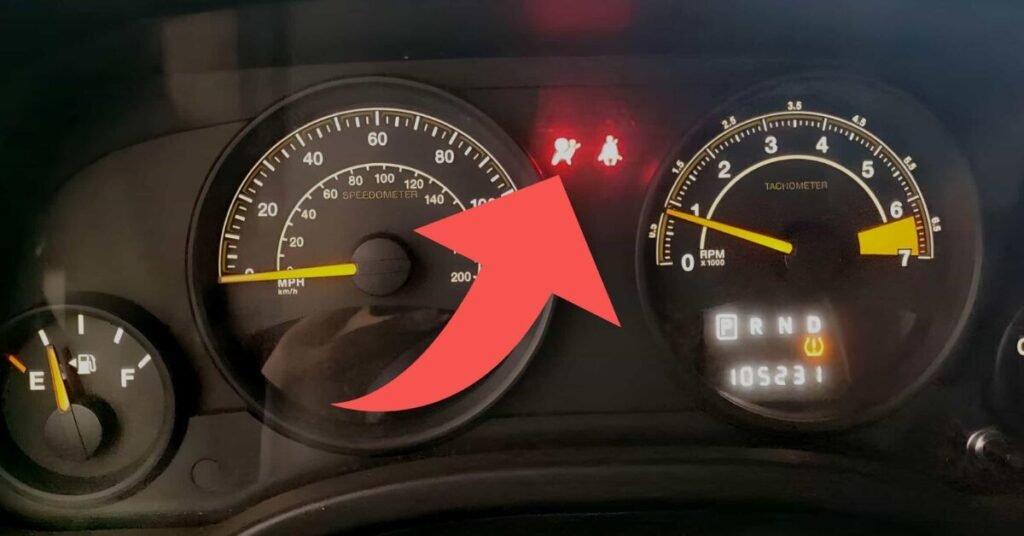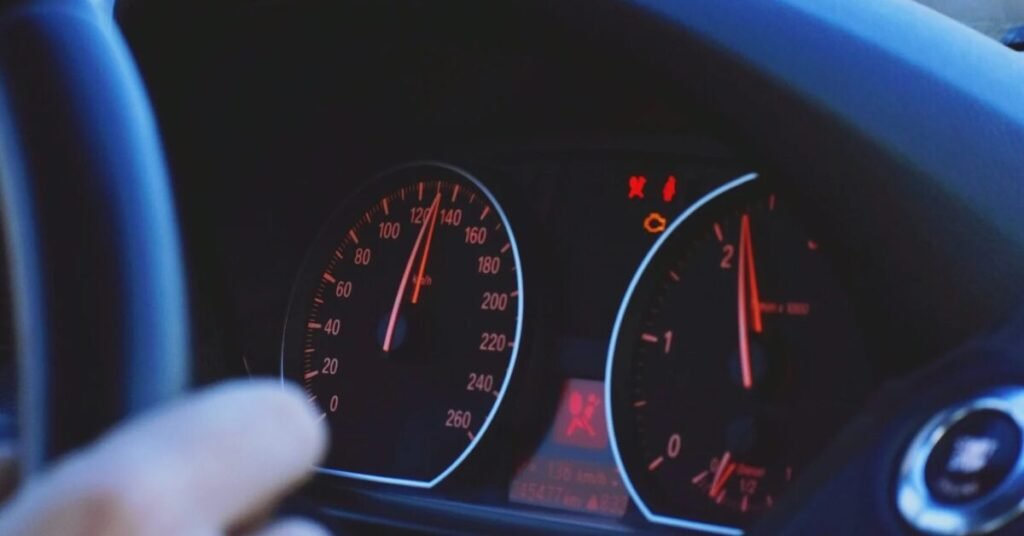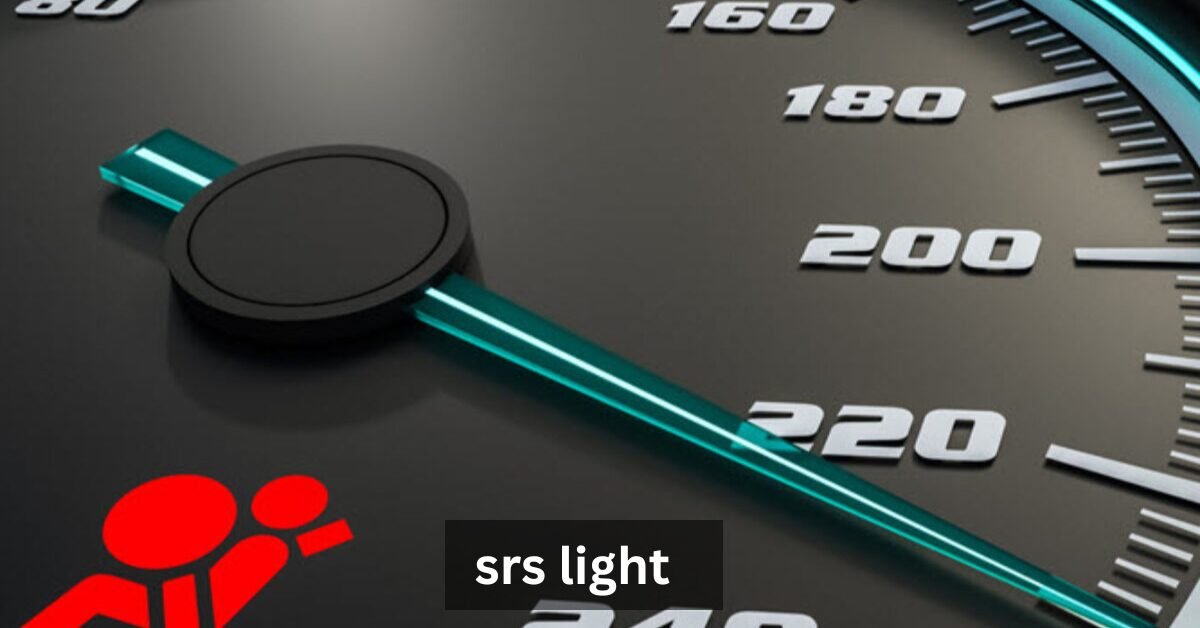If the SRS light stays on, it’s important to get your vehicle inspected by a professional as soon as possible. Ignoring the light could put you at risk in the event of a crash. A qualified mechanic can use an OBD-II scanner to diagnose the issue and recommend the necessary repairs.The SRS light, short for Supplemental Restraint System, plays a critical role in your vehicle’s safety system. Understanding why this light turns on, what it means, and how to resolve the issue is essential for ensuring that your airbag and seatbelt systems are functioning properly, keeping you and your passengers safe on the road.
In this comprehensive guide, we’ll dive deep into the SRS light, exploring its meaning, common causes for its activation, how the system works, and what steps you should take when the SRS light comes on. We’ll also address common myths surrounding the SRS light, the costs of repair, and provide preventive measures to avoid future issues. Let’s ensure your car stays as safe as possible!
What is the SRS Light?

Overview of the Supplemental Restraint System (SRS)
The SRS light on your car’s dashboard is an indicator that something might be wrong with your vehicle’s airbag system or seatbelt mechanisms, both critical components of your car’s safety features. The Supplemental Restraint System (SRS) works alongside your car’s primary restraint system—the seatbelt—to provide additional protection in the event of a crash. When activated, the airbags help cushion and protect you from injury during impact.
Why is the SRS Light Important for Car Safety?
The SRS light isn’t something you should ignore. It serves as an early warning system that alerts you to issues with your airbag or seatbelt systems. If the light stays on, it could indicate that these safety features may not deploy properly in the event of a collision, putting your safety at risk. Keeping your car’s SRS system in top condition is crucial for ensuring that it works when you need it most.
What Does the SRS Light Mean?
The SRS light serves a simple yet crucial purpose: to indicate potential issues with your vehicle’s safety restraint system. This could range from faulty airbags to issues with the crash sensors, seatbelt pretensioners, or wiring problems.
Key Components of the SRS System: Airbags, Seatbelts, and Sensors
- Airbags: Airbags are the most recognizable part of the SRS system. In the event of a collision, sensors detect the impact, and the airbag inflates rapidly to cushion and protect the occupants of the vehicle.
- Seatbelts: The seatbelt system is another key component that helps restrain the passenger during a crash. Some vehicles include seatbelt pretensioners, which tighten the seatbelt during a crash to hold the occupant in place.
- Sensors: The system relies on sensors to detect collisions or sudden decelerations. These sensors determine the severity of the crash and whether the airbags should deploy.
When the SRS light illuminates, it means there’s an issue somewhere in this system. Whether it’s a malfunctioning sensor, faulty wiring, or even a problem with the airbags themselves, the light is your warning sign to investigate further.
How the SRS Light Alerts You to Issues
When the SRS light is illuminated, it’s the car’s way of telling you that one or more components in the airbag or seatbelt system aren’t functioning properly. Sometimes the issue is minor, such as a loose connection, but other times it could indicate a serious malfunction that could prevent your airbags from deploying in an accident.
Common Causes of the SRS Light Activation
Faulty Airbags and Airbag Module Issues
One of the most common reasons the SRS light comes on is a malfunction within the airbags or the airbag control module. If the airbag itself is faulty, or if the airbag control module isn’t communicating properly with the vehicle’s computer, the system will alert you with the SRS light.
Sensor Malfunctions: Crash Sensors and Occupancy Sensors
Another common cause of SRS light activation is a malfunction in the sensors that monitor the vehicle during a crash. Crash sensors detect the force of a collision and determine whether the airbags should deploy. If these sensors fail, the system may not deploy airbags correctly.
Occupancy sensors, which detect whether a passenger is sitting in the seat, can also cause the SRS light to turn on if they malfunction, particularly in passenger-side airbags.
Electrical Issues and Wiring Problems
The SRS system relies on a network of electrical connections to communicate between sensors, airbags, and the control module. Wiring issues, such as frayed or disconnected cables, can trigger the SRS light and prevent the system from functioning as intended.
Seatbelt Pretensioner Failures
Seatbelt pretensioners tighten the seatbelt during a crash to secure the occupant in place. If there’s a problem with the pretensioner, such as a mechanical failure, it can cause the SRS light to turn on, indicating that the system won’t function properly in the event of a crash.
Other Factors That Can Trigger the SRS Light
Other potential causes include issues with the airbag control module, damaged crash sensors, or even faulty airbags. Additionally, routine maintenance or a reset after repairs can cause the light to appear temporarily.
How Does the SRS! Light System Work?
Interaction Between Airbags, Seatbelts, and Sensors
The SRS system is a coordinated effort between airbags, seatbelts, and sensors to provide comprehensive safety in a crash. Sensors in the vehicle detect sudden decelerations or impacts and signal the airbag control module to deploy the airbags. At the same time, the seatbelt pretensioners are activated to tighten the seatbelt, preventing the occupant from moving too far during the collision.
Role of the Airbag Control Module in Detecting Crashes
The airbag control module is the brain of the SRS system. It receives input from various sensors throughout the vehicle and processes this data to decide if airbags need to be deployed. If there’s an issue with the airbag control module, the SRS light will turn on, indicating a potential problem with the system.
How the SRS System Deploys Airbags During Collisions
When a crash occurs, the sensors send signals to the airbag control module, which then determines whether or not the airbags should be deployed. The system ensures that the airbags deploy at the right moment, based on the severity of the crash and the positioning of the occupants. If everything is functioning properly, the airbags inflate in milliseconds to cushion the passengers.
Diagnostic Procedures for SRS Light Issues
How to Use an OBD-II Scanner to Diagnose SRS Light Problems
One of the first steps in diagnosing an SRS light issue is to use an OBD-II scanner. This car diagnostic tool can read the error codes stored in your vehicle’s computer system and identify the specific problem causing the SRS light to turn on.
Understanding SRS Error Codes
When the OBD-II scanner identifies an issue, it will display an error code. These codes can provide valuable insight into which part of the SRS system is malfunctioning. Common SRS error codes include problems with airbags, sensors, or wiring.
When to Seek Professional Help
While an OBD-II scanner can help identify the problem, some issues may require professional expertise to diagnose and repair. If the SRS light persists after attempting a reset, or if the system reports a serious issue, it’s best to seek help from an automotive repair technician.
What to Do When the SRS Light Comes On
Immediate Actions You Should Take
If the SRS light comes on, it’s crucial not to ignore it. If the light is flashing or stays on continuously, it’s a sign that your airbag or seatbelt system isn’t functioning as it should. Immediately schedule a diagnostic check with a qualified mechanic to address the issue before it compromises your safety.
Risks of Driving with the SRS Light On
Driving with the SRS light on is risky. The light could be indicating that the airbags might not deploy properly in the event of a crash. This could leave you or your passengers vulnerable to serious injury. It’s best to address the issue as soon as possible to ensure your vehicle is fully protected.
How to Reset the SRS Light (If Applicable)
In some cases, the SRS light may be reset after a minor issue has been fixed, such as a loose connection. However, it’s important to make sure the problem is fully resolved before attempting to reset the light. If you’re unsure, seek professional assistance.
Common Myths About the SRS Light
Debunking Common Misconceptions
A common misconception is that driving with the SRS light on is safe if the vehicle seems to function normally. This isn’t true. The light indicates a malfunction that could prevent the airbags from deploying, so it’s always best to have the system checked out as soon as possible.
Why Ignoring the SRS Light Is Dangerous
Ignoring the SRS light could have severe consequences. If the airbags fail to deploy in a crash, it could increase the risk of injury or death. Even minor issues, if left unchecked, could escalate into more significant problems down the line.
Cost of Repairing the SRS System
Breakdown of Typical Repair Costs
Repair costs for the SRS system can vary widely, depending on the issue. Minor repairs, such as fixing a loose sensor or repairing wiring, can cost a few hundred dollars. However, if the airbag control module or airbags themselves need replacing, the cost could be significantly higher.
Factors Affecting Repair Costs
Factors such as the make and model of your vehicle, the severity of the issue, and labor costs can all influence the final price. It’s always a good idea to get a quote from a few different repair shops to ensure you’re getting a fair deal.
DIY vs. Professional Repairs: When to Get Expert Help
While minor fixes can sometimes be handled by experienced DIYers, the complexity of the SRS system often requires professional expertise. A certified technician will have the necessary tools and knowledge to properly diagnose and repair the system.
Preventive Measures to Avoid SRS Light Issues
Regular Vehicle Maintenance and Safety System Checks
To keep your vehicle’s SRS system functioning optimally, it’s crucial to follow a regular maintenance schedule. This includes having your car’s airbag system, seatbelts, and sensors inspected by a professional during routine check-ups. An automotive repair technician can help identify potential issues before they become serious problems, ensuring that your car’s safety features remain in good condition.
How to Keep Your Airbag and Seatbelt System in Good Condition
Taking care of your car’s airbag and seatbelt systems involves ensuring that no wires are frayed, sensors are properly calibrated, and the control module is functioning as intended. It’s also essential to avoid modifications to the vehicle that could interfere with these safety components, such as removing or tampering with the airbags. Always follow the manufacturer’s instructions regarding maintenance and service.
Importance of Routine Diagnostics
In addition to regular physical inspections, utilizing vehicle diagnostic tools, such as OBD-II scanners, can help ensure that your SRS system is in good shape. These tools can detect early warning signs of failure and allow for preventative repairs before more serious issues arise. Diagnosing issues early can save both time and money in the long run.
The Future of SRS Technology
Emerging Trends in Airbag and Restraint Systems
As vehicle safety continues to improve, SRS technology is evolving to provide even greater protection for drivers and passengers. Modern cars are being equipped with advanced airbags that adapt to the severity of a crash and deploy in multiple stages for more tailored protection. Additionally, seatbelt pretensioners and airbags are now being integrated with other vehicle safety technologies, such as Advanced Driver Assistance Systems (ADAS).
Integration with Advanced Driver Assistance Systems (ADAS)
The future of the SRS system is closely tied to the development of ADAS, which includes technologies such as automatic emergency braking, lane-keeping assist, and collision avoidance. These systems work in conjunction with airbags and seatbelts to provide a more comprehensive safety net for drivers. For example, in the event of a potential collision, an ADAS system might trigger the SRS system in a more proactive manner, ensuring faster and more accurate deployment of airbags.
How SRS Technology is Evolving to Improve Safety
SRS technology is becoming smarter, with the integration of sensors that can detect the position and weight of passengers. This ensures that the airbags deploy in a manner that provides the most protection based on the individual’s size and seating position. Furthermore, advancements in materials and sensor technologies are enhancing the efficiency and reliability of airbag systems.
Real-Life Case Studies: SRS Light Activation and Resolution

Examples of Common SRS Light Issues and How They Were Resolved
Real-life case studies show that the SRS light can be triggered by a variety of issues, from simple electrical problems to more complex airbag sensor malfunctions. One common issue involves the failure of seatbelt sensors, which may not detect that a passenger is wearing their seatbelt. This can trigger the SRS light and prevent the airbag from deploying during a crash. Fortunately, replacing or recalibrating the sensor is a relatively simple fix.
Another example is when the airbag control module experiences electrical issues. In such cases, technicians may need to replace the module or reprogram it to restore the system’s functionality.
Lessons Learned from Real-Life SRS Light Scenarios
From these case studies, we can learn that regular diagnostic checks and timely repairs are key to preventing more costly and potentially dangerous issues. Most importantly, ignoring the SRS light can lead to serious consequences. Always take action immediately when the light comes on to ensure your safety.
Conclusion
The SRS light is a critical indicator of your vehicle’s airbag and seatbelt system. When illuminated, it signals a malfunction that could compromise your safety in the event of a crash. Understanding the causes of the SRS light activation, how the system works, and when to seek professional help are essential for keeping your vehicle safe and roadworthy.
Never underestimate the importance of your vehicle’s safety systems. Regular maintenance and timely repairs can ensure that your airbag and seatbelt systems are always functioning at their best. The SRS light is there to help keep you safe, and addressing any issues promptly will give you peace of mind while driving. Stay proactive, stay safe, and always keep your car’s safety systems in optimal condition.
Frequently Asked Questions
Can I Drive Safely with the SRS Light On?
Driving with the SRS light on is not recommended. The light indicates a malfunction within the airbag or seatbelt system, which could affect the deployment of airbags in the event of a crash. It’s best to have the issue addressed immediately to ensure the safety of you and your passengers.
How Much Does it Cost to Repair the SRS System?
Repair costs for the SRS system vary depending on the issue. Minor repairs, such as fixing wiring issues or replacing sensors, can cost a few hundred dollars. More serious issues, such as replacing the airbag control module or the airbags themselves, could cost several thousand dollars. It’s best to get a detailed quote from a repair shop to understand the specific costs for your vehicle.
How Often Should I Check the SRS System in My Vehicle?
You should have your vehicle’s SRS system checked during regular maintenance intervals, typically every 12,000 to 15,000 miles or as recommended by your car’s manufacturer. If the SRS light comes on between check-ups, have the system inspected immediately.
\Stay in touch to get more updates & alerts on Creative Released! Thank you



